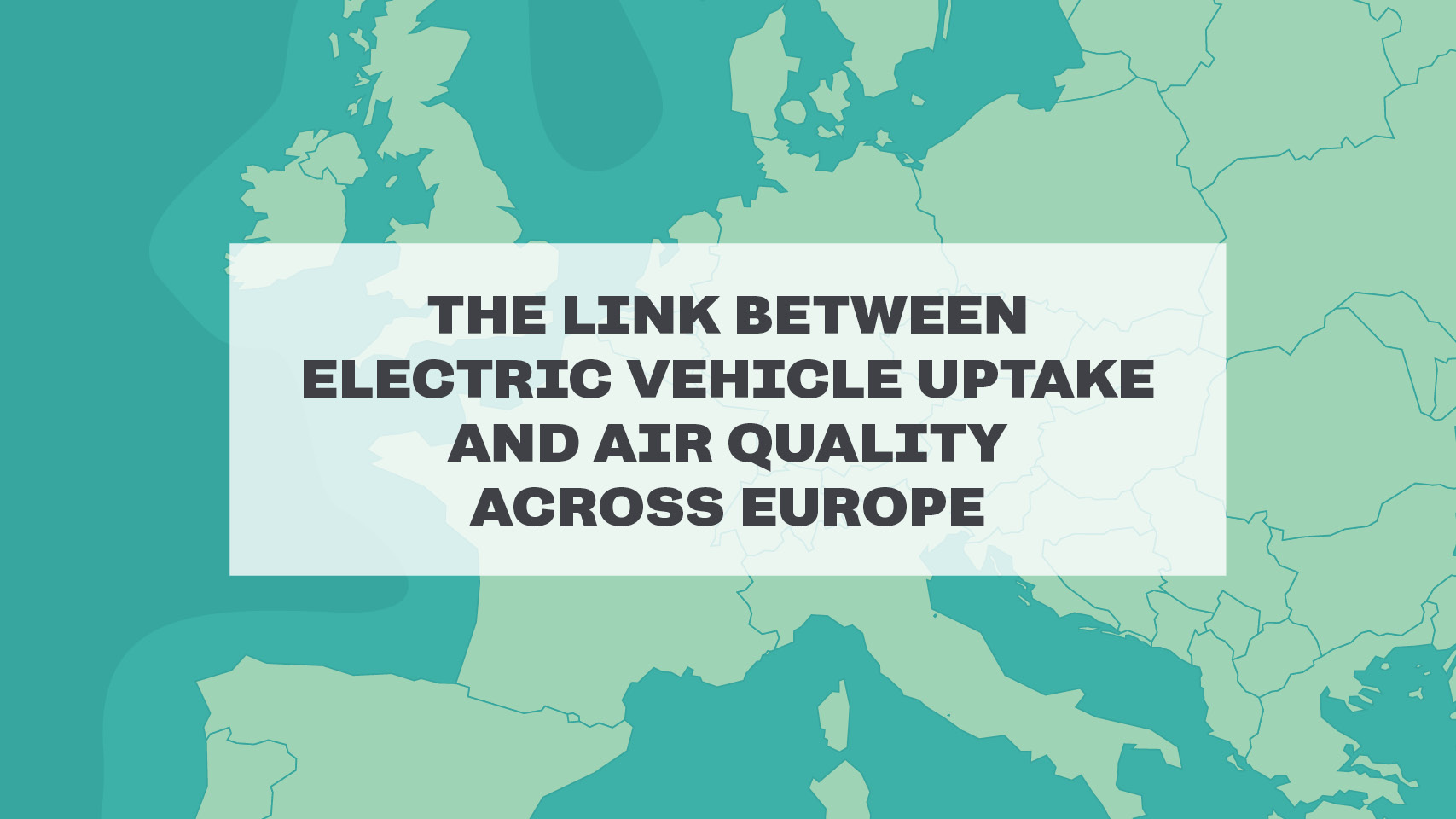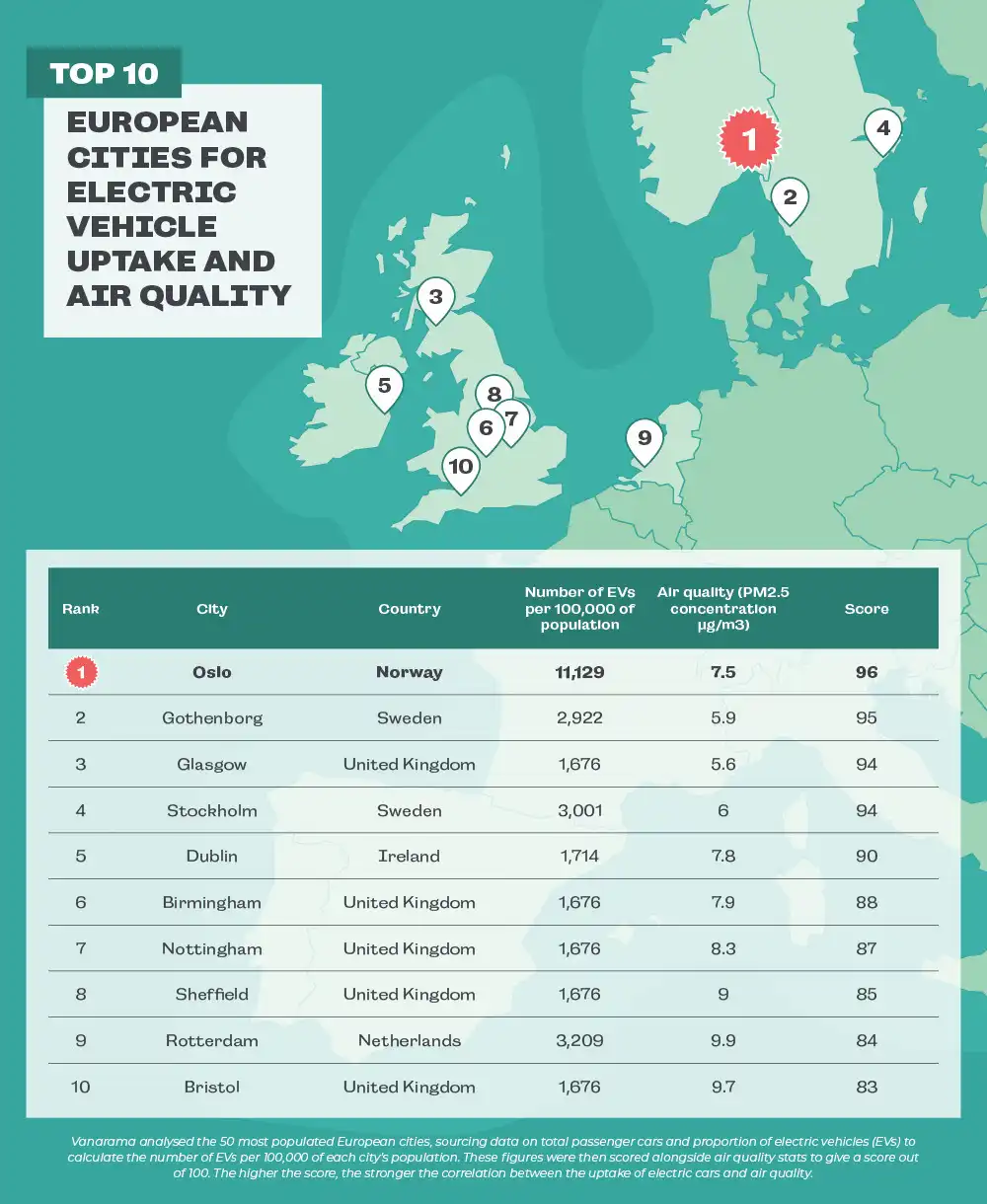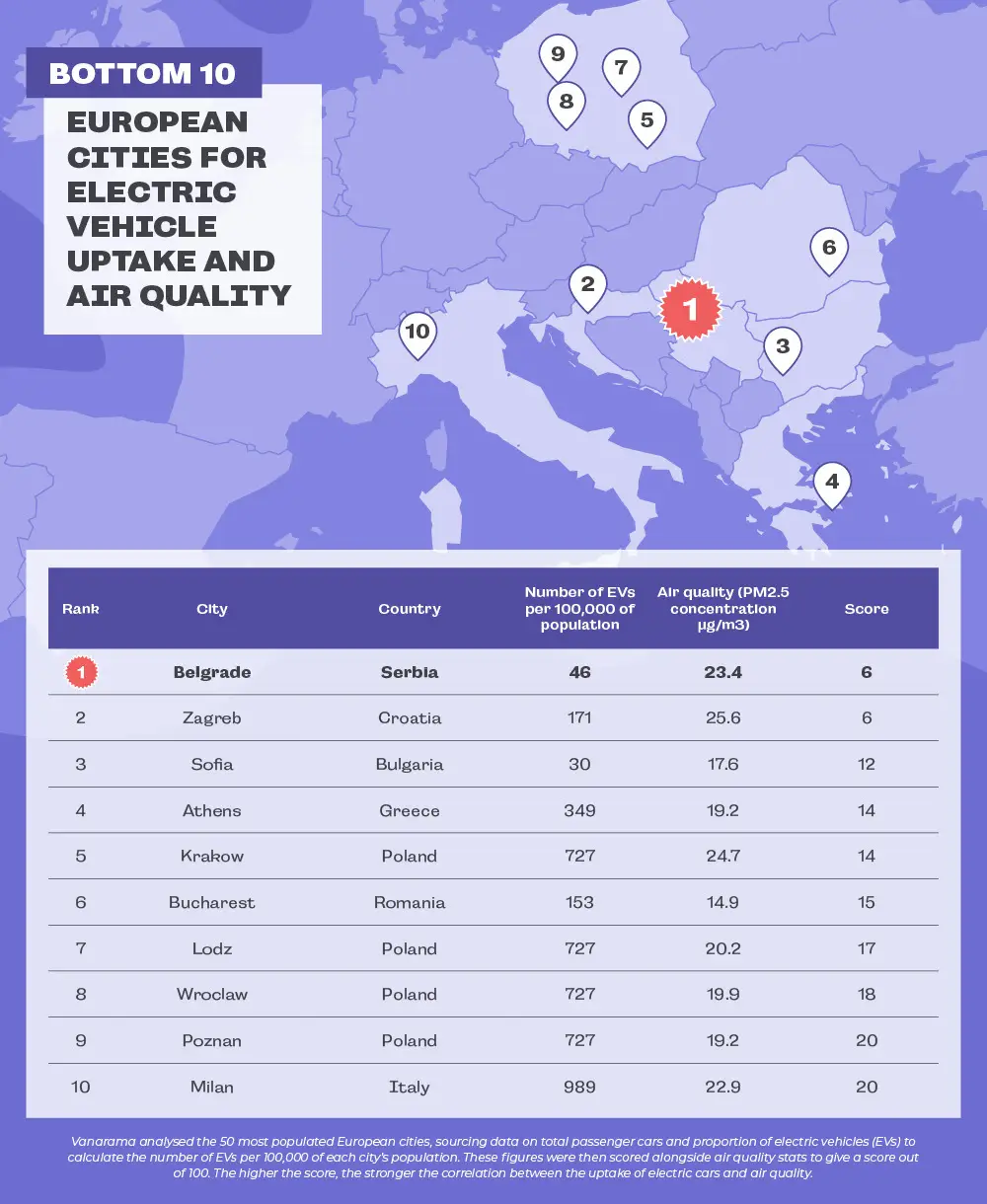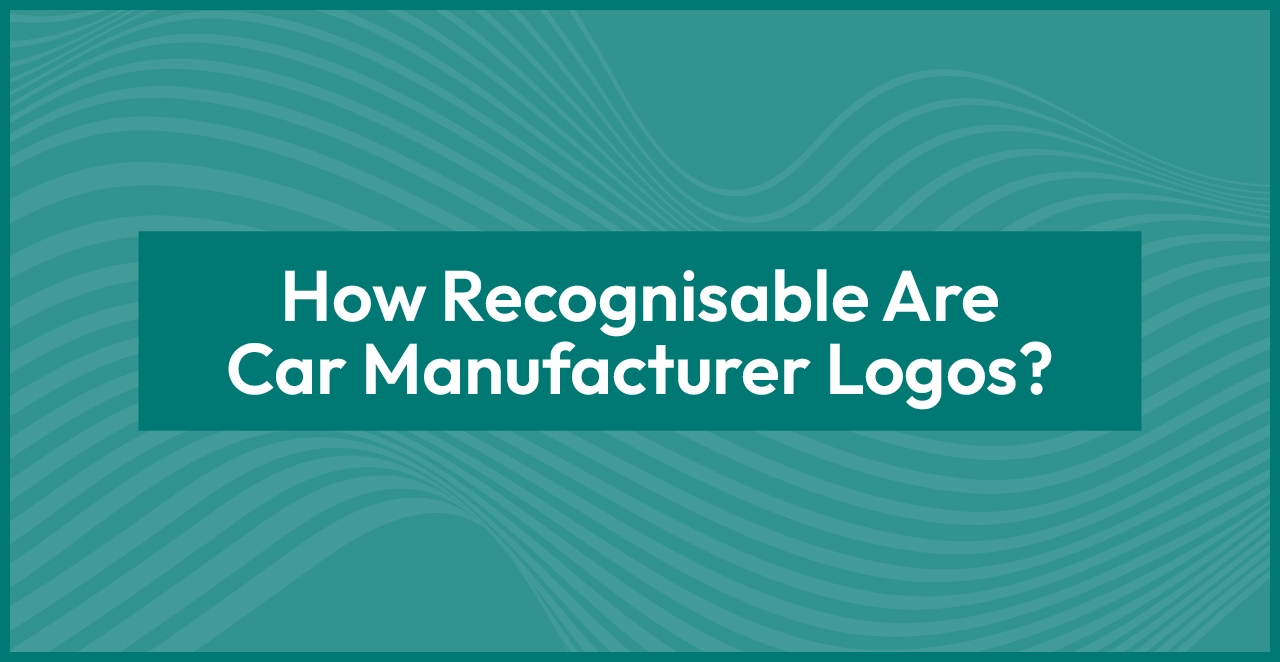Norway Has Some Of The Best Air Quality And Electric Vehicle Adoption In Europe
There are undeniable benefits of ditching traditional vehicles for electric. The cut on emissions released not only has a direct impact on your wallet and the environment but also on human health. Governments across the world are implementing emissions targets in a bid to reduce pollution, with electric vehicles (EVs) seen as a solution to issues such as air quality.
Road transport contributes to poor air quality – through fine particulate matter emissions, also known as PM2.5. High levels of this can have a considerable effect on public health.
Statistics report that air pollution is linked to around 36,000 deaths in England each year, with the PM2.5 from vehicles, wood burning, industry, and farming playing a part. According to scientific research, road transport is the largest source of greenhouse gases in the UK and the second-largest in the European Union.
Car leasing exeprts Vanarama explore the link between air quality and EV uptake by analysing PM2.5 data against the proportion of electric cars across Europe’s most populated cities.
More Than A Fifth Of Cars In Norway Are Electric
Unsurprisingly, the city with the highest score of 96 is Oslo in Norway, a country which has been hailed for its wide-ranging policies transforming perceptions of EVs. Norway is leaps and bounds above the rest of Europe when it comes to registering new EVs, with there being 11,129 per 100,000 people. EVs also account for more than a fifth (21.9%) of the country’s total cars.
By comparison, London has only 1,676 per 100,000 of its population. Norway’s strategy to accelerate the uptake of EVs was making them affordable enough to purchase through lower taxes while increasing taxes on traditional cars.
Oslo’s air quality also ranked well at 7.5μg/m3 – good enough for the fifth-best figure in our research. The UN Environment Programme reports that EVs have helped reduce CO2 emissions in the Scandanavian city by 35%, improving air quality and protecting public health. Consequently, Norway has the lowest risk of premature deaths due to air pollution.
Sweden Follows Closely In Second Place With 95 Points
In second is Swedish city Goeteborg, with a score of 95, closely followed by Stockholm in fourth place with 94 points. The Swedish capital boasts 3,001 EVs per 100,000 people and an air quality of 6μg/m3, putting it in the top 10% of countries.
Sweden overtook Norway, a world leader in mainstream electric motoring, for EV sales in the first quarter of last year. Emissions from combustion engines are steadily declining, and overall, total emissions in Sweden have lowered across almost all sectors, primarily in the transport sector. However, most of Sweden’s pollution comes from industry.
Sweden is continuing the Scandinavian trend of EV uptake through a number of innovative legislations that go beyond subsidies for the purchase of a plug-in or full electric, for example EV drivers get free public parking across many cities and are even able to use bus lanes. While countries like the UK have been plunged into an energy crisis, Sweden’s low electricity prices have helped encourage EV purchases – with prices being some of the lowest in Europe.
5 UK Cities Make The Top 10 For Air Quality And EV Uptake
Glasgow, sharing 3rd place with Stockholm, has a score of 94, with British cities Birmingham (88), Nottingham (87), and Sheffield (85) following closely behind. Interestingly, Glasgow had the lowest air pollution out of all 50 cities with 5.6μg/m3.
In 2017, the World Health Organisation reported that Glasgow was more polluted than London, however following the introduction of the Low Emission Zone the following year, air quality improved. This only applied to local bus services, so when it is rolled out to all vehicles in 2023, there is expected to be an even bigger improvement in air quality.
The UK is experiencing a growing adoption of EVs, with March this year showing the highest volume of electric registrations ever recorded in one month – an increase of 79% from the previous year. However, in terms of air pollution, the UK in general is failing to meet legal limits of nitrogen dioxide pollution, largely generated by vehicles, in other cities and areas. According to research, London is 1.9 times over the legal limit for air pollution, followed by South Wales and Eastern England. One of the main reasons for this is increasing levels of private car ownership and traditional vehicles.
Serbian And Croatian Cities Scored The Lowest On The Index
The cities with the lowest scores are Belgrade and Zagreb, both with an overall score of six. There are an estimated 46 and 171 EVs per 100,000 people and an air quality rating of 23.4μg/m3 and 25.6μg/m3, respectively. Zagreb’s air quality, second only to Sarajevo in our research, is more than four times lower than Glasgow’s.
In March 2020, the Serbian government introduced a subsidy of one million euros for electric and hybrid vehicles, allowing drivers to claim €3,400 for their vehicles. However, in August 2021 the programme was suspended as the budget was exhausted – it is unclear if it will be resumed. Due to this, there hasn’t been a significant uptake of EVs in Serbia.
Belgrade’s air quality is rather poor at 23.4μg/m3 and has been reported to be largely due to coal power plants as well as older cars in the capital.
4 Polish Cities Have Some Of The Worst European EV Adoptions
Poland appeared four times on the bottom 10 of the index, including Krakow, Loldz, Wroclaw, and Poznan. In Europe, Poland is one of the largest passenger car markets by sales and it is dominated by combustion engines. Additionally, air quality in Polish cities is among the worst in the European Union. While not all of this can be attributed to road transport – burning coal and wood, and household waste all play a part – vehicles do largely contribute.
To meet CO2 emissions targets, Poland is committing to promoting EVs to improve local air quality and is introducing EV incentives and programmes to encourage an already-interested population that recorded the highest uptakes in 2019.
Methodology
Analysing the 50 most populated European cities, we sourced data on total passenger cars and the proportion of electric vehicles (EVs) to calculate the number of EVs per 100,000 of each city’s population. These figures were then scored alongside air quality stats to give a score out of 100.
The higher the score, the stronger the correlation between the uptake of electric cars and air quality.
Where the number of EVs wasn’t available, we applied the percentage of electric cars in the relevant country to the city’s total number of cars.
To avoid the influence of external factors on our research, cities in Ukraine and Russia have been removed from the results.







